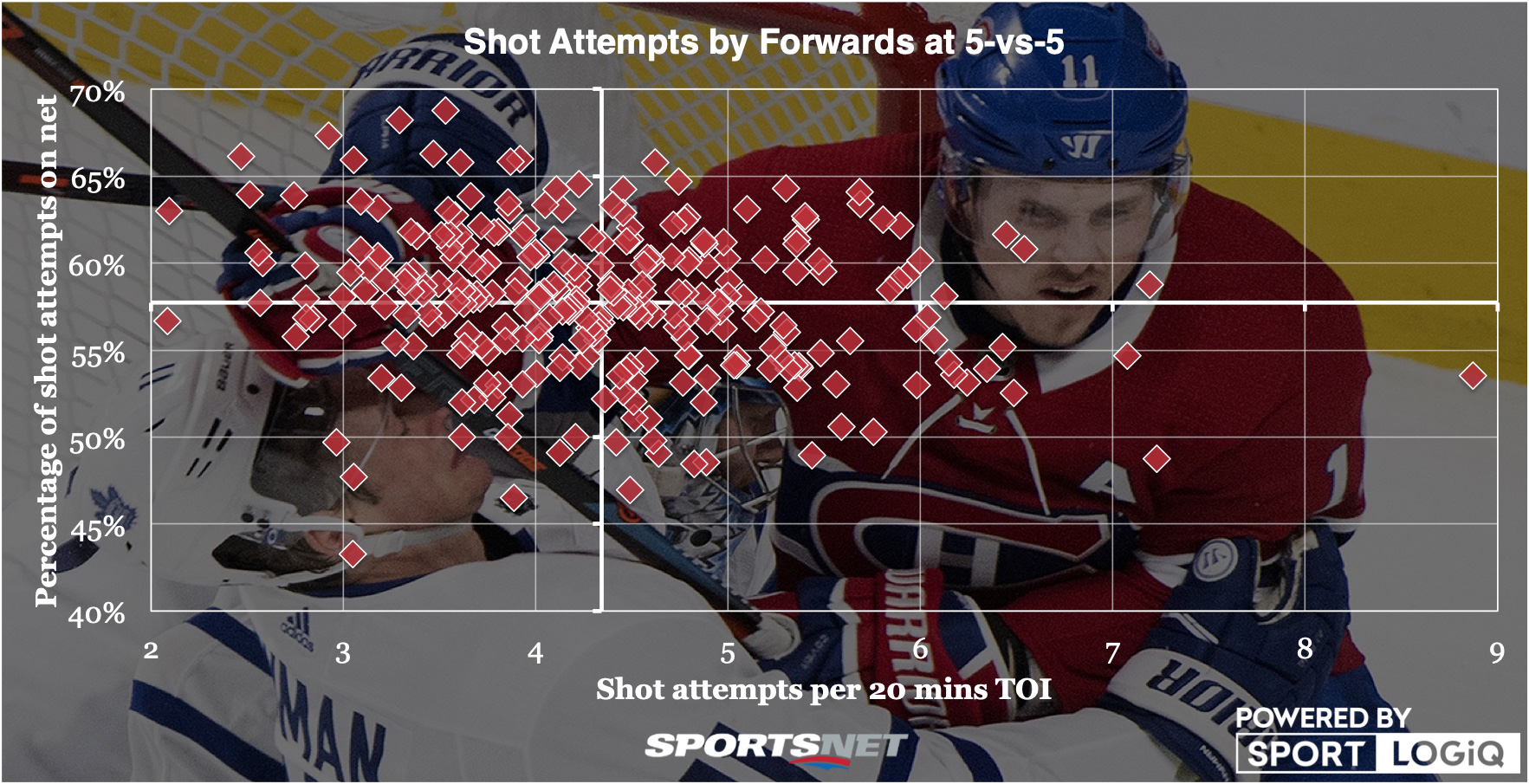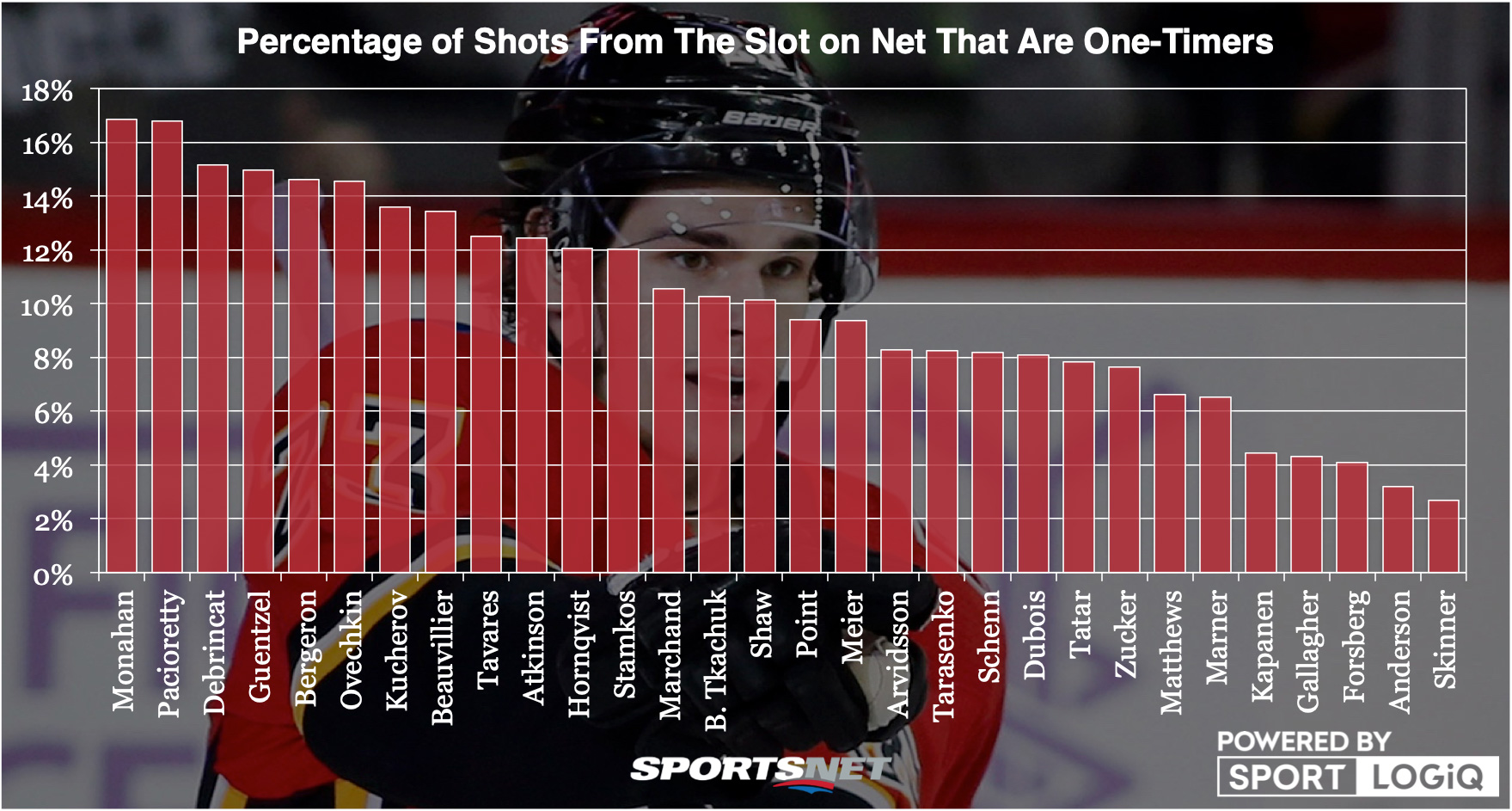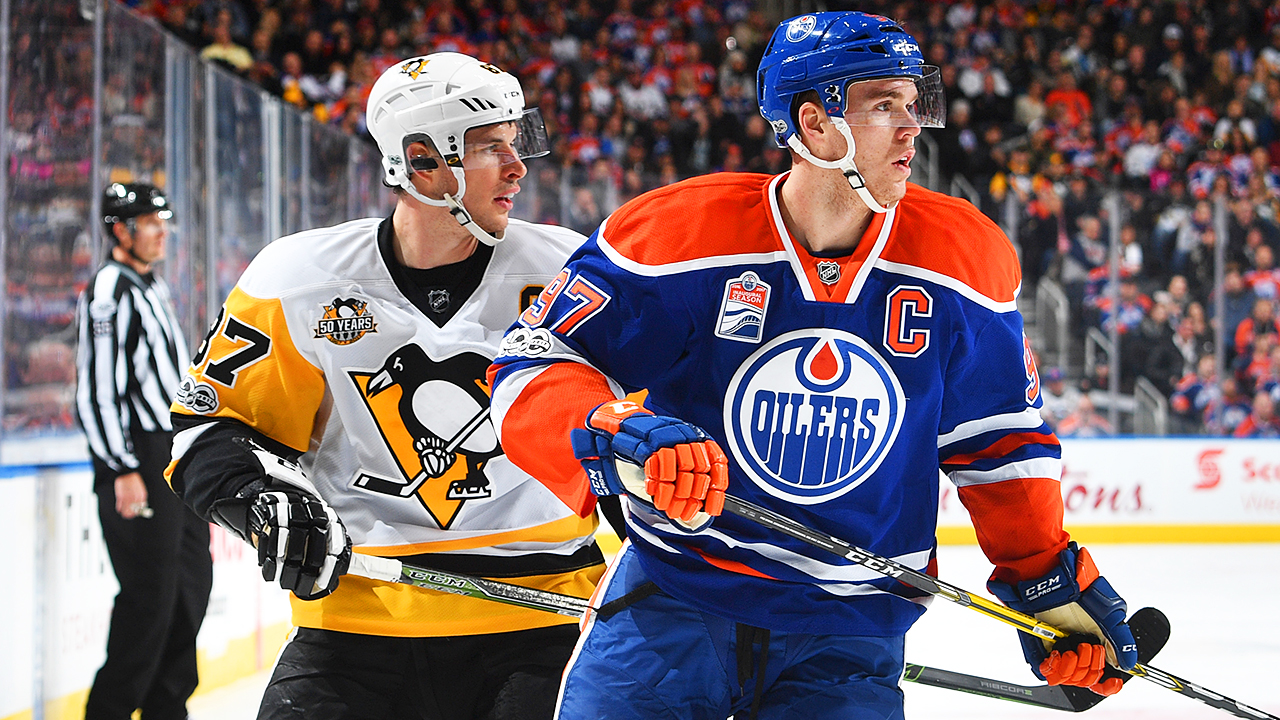After breaking down the best offensive zone passers in the NHL using last season’s data, it’s time to move on to shooters. On the surface, identifying the best shooters in the NHL should be relatively easy, since they score goals at high rates on a consistent basis.
However unlike passing, where playmakers pass to a variety of players and are more reliant on team strength to convert the plays they make, shooting comes from the same player over and over.
This means that while we can measure how dangerous a player’s shots are in a general sense, individual shooting talent can vastly change the results and render a lot of the data moot. Patrik Laine for example, doesn’t take many shots that would qualify as dangerous, but he scores anyway due to his exceptional shot.
So we can look at which players create the most quality looks, or which players have the highest quality looks, but goal scoring will always have some very significant outliers due to the persistence of talent that can’t, at this stage anyway, be entirely captured by statistics. Because of that, the cleanest way to look at this would be a dissection of the most dangerous volume shooters at even strength, not necessarily the best scorers.
With all those caveats out of the way, let’s try to figure out which forwards create the most scoring opportunities in the NHL at 5-vs-5. First, let’s do the same thing we did with passes and put shot attempt volume alongside the percent of total shot attempts that are on net.

Once again the axes are set to the league averages for forwards last season.
That one marker way over on the right side of the chart is Brendan Gallagher, the shot volume king in the NHL last year by a wide margin, with Filip Forsberg, Viktor Arvidsson, and Timo Meier being the only other forwards to notch over seven shot attempts per 20 minutes of ice time. Of that elite shot producing group, only Arvidsson is able to get his attempts on net more often than league average, with Forsberg last year getting fewer than half of his shot attempts on net, which is crazy when you realize he scored 28 goals in just 64 games.
The spray and pray method with shooting can be effective, but so can the more exacting strategy of searching for higher quality shots, so let’s look just at shots on net — and where they come from — first by volume of overall scoring chances then ordered by quality.

Looking at the top-30 scoring chance producers in the NHL, then ordering by how many of those chances come from the high danger area, the surprising name at the top of the list is Brady Tkachuk, whose entire game seems to be modeled to get him to the net front.
Lots of other net-front specialists make appearances on the list like Arvidsson, Meier, Gallagher, John Tavares, Andrew Shaw, and Patric Hornqvist, but there are some names like Tomas Tatar or Mitch Marner that are less expected.
We can also see the difference between players like Alex DeBrincat, Alex Ovechkin, and Vladimir Tarasenko, who set up in the high slot to rip shots with a bit more space, compared to those like Shaw and Brayden Point who pick their spots more exclusively in tight.
We can add another layer to this data by dissecting which players are adding extra qualities to their scoring chances that drive more goals. How often are they shooting off the rush? How often are their scoring chances preceded by a cycle pass? How often are they capitalizing on broken plays due to forechecking plays? If we re-organize the scoring chance data again by sorting for these extra factors that make things dangerous, how does that shake out?

When adding these layers of context to the shots, Arvidsson rockets to the top of the list, which shouldn’t be a huge surprise considering he just scored 34 goals in 58 games last season, knocking on the door of a 50 goal pace.
Arvidsson attacks any way you want, with a huge number of chances off the rush, and nearly as many off the cycle. Also moving up the list is Ovechkin, who jumps from 23rd spot in the last graph to seventh in this one. Ovechkin’s shooting talent is special, but he’s able to augment his shots by attacking off the rush more than anyone else aside from Arvidsson.
Tarasenko makes an even bigger jump than Oveckin does, while Gallagher, Meier, and Auston Matthews hang around at the top no matter how we sort things.
Finally, we want to not only factor in puck movement prior to the shot, but see how quickly that puck movement is happening, so let’s look at one timers on the shots these players are putting on net from the slot.

Here we have an entirely different look for players at the top, and as you might guess from watching him play, it pays to play on a line with Johnny Gaudreau. That isn’t to take anything away from Sean Monahan; you need to have a nose for the net to receive these sorts of passes anyway, and that takes talent, not to mention getting the shots off in traffic.
A second consecutive down scoring year from Max Pacioretty might make some believe he’s no longer the player he once was, but the volume is there, the quality shots are there, and last season he was ripping one-timers like crazy. With a healthy Paul Stastny and Mark Stone likely on his line for a full season, this could be a renaissance year for the former perennial 30-goal man.
Gallagher, Forsberg, and Jeff Skinner slide all the way to the bottom of the list by this metric, showing how much more they had to do on their own to get scoring chances, and how much difficulty their teams had moving the puck. That lack of pre-shot movement in quick succession with a shot was consistently noticeable with the Predators last season, and it was one of the reasons they disappointed in the playoffs.
Surprisingly Matthews and Marner are both at the bottom end of the group despite the Maple Leafs being one of the better passing teams in the league last season, but that could be due to rarely playing with Nylander last year for Matthews, and usually being the one passing for Marner.
Overall, like I expected, things are less conclusive on the shooting side than the passing side, but at 5-vs-5 I think we can safely say players like Arivdsson, Gallagher, and Meier can be relied on to nearly singlehandedly drive scoring on lines once again this season, and Ovechkin’s sport-defining goal scoring doesn’t appear to be drying up any time soon.
However if anyone is going to challenge Ovechkin’s supremecy as the king of goals, at even strength at least, it might be Matthews. Creeping near the top but never at it in all but one of these, Matthews is someone I can easily see scoring 50 this year.
[relatedlinks]







